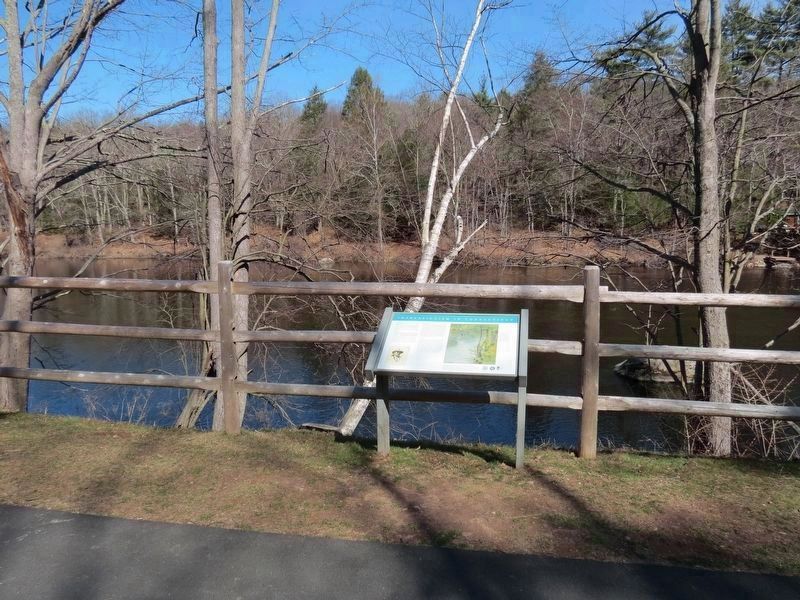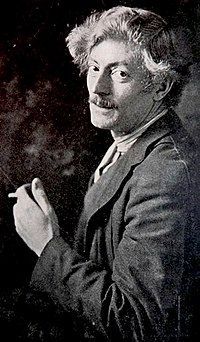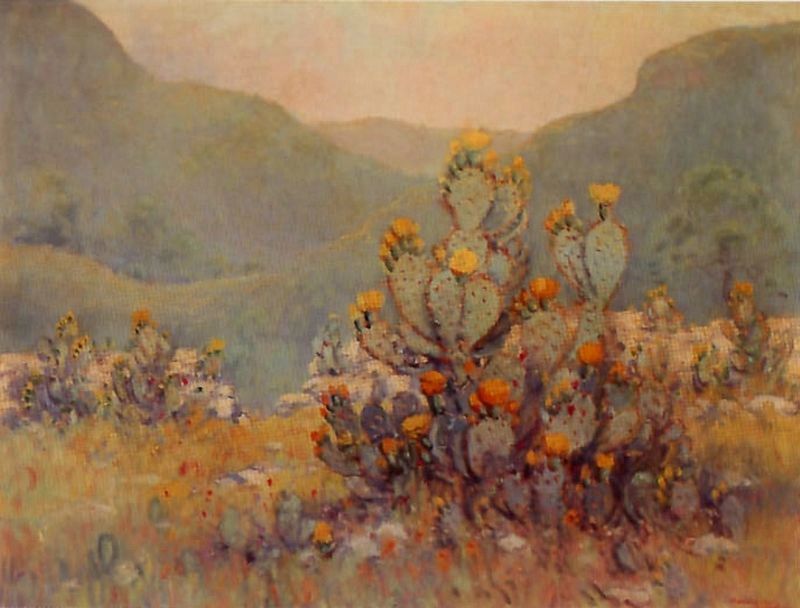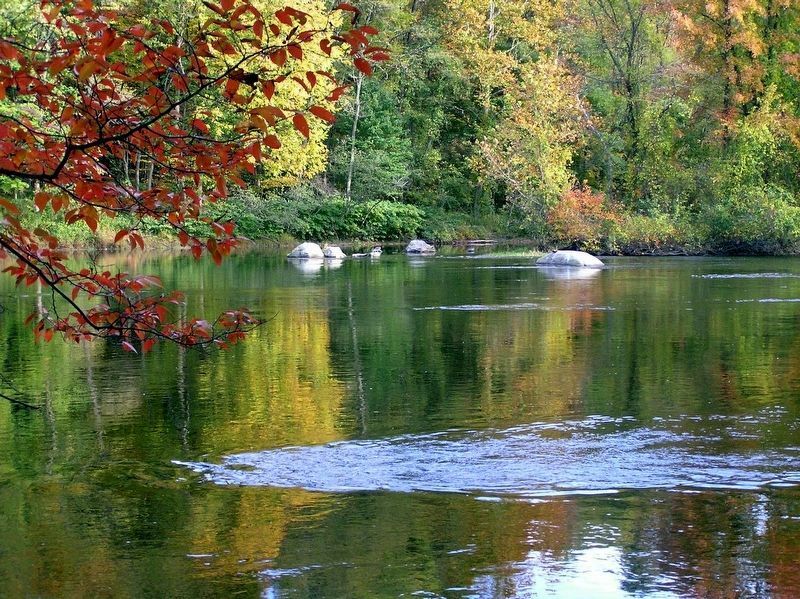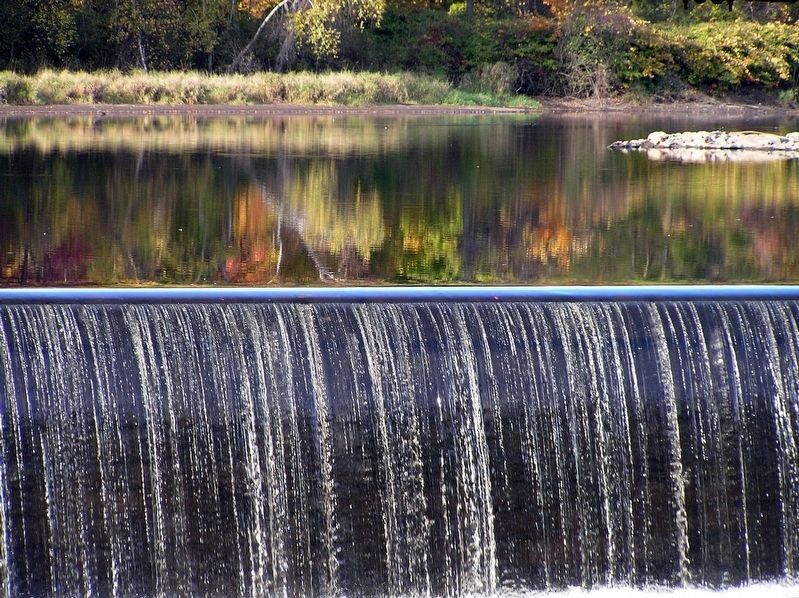Burlington in Hartford County, Connecticut — The American Northeast (New England)
Dawson Dawson-Watson
Impressionism in Connecticut
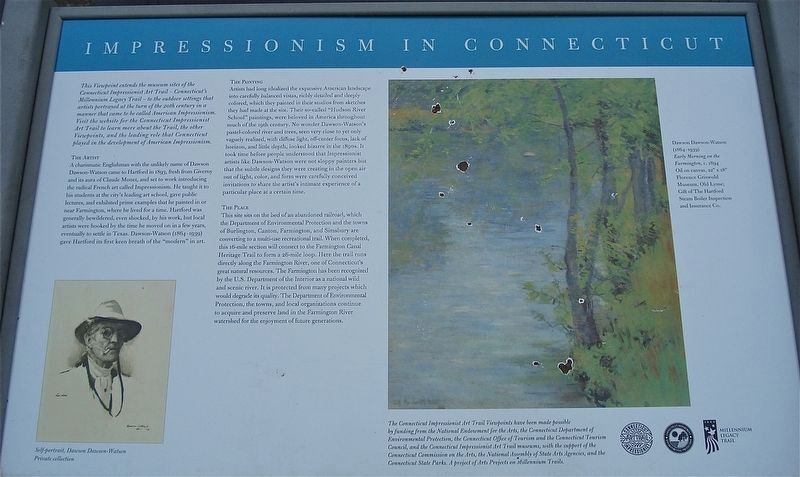
Photographed By Alan M. Perrie, December 9, 2015
1. Dawson Dawson-Watson Marker
This Viewpoint extends the museum sites of the Connecticut Impressionist Art Trail- Connecticut’s Millennium Legacy Trail- to the outdoor settings that artists portrayed at the turn of the 20th century in a manner that came to be called American Impressionism.
The Artist
A charismatic Englishman with the unlikely name of Dawson Dawson-Watson came to Hartford in 1893, fresh from Giverny and its aura of Claude Monet, and set to work introducing the radical French art called Impressionism. He taught it to his students at the city’s leading art school, gave public lectures, and exhibited prime examples that he painted in or near Farmington, where he lived for a time. Hartford was generally bewildered, even shocked, by his work, but local artists were hooked by the time he moved on in a few years, eventually to settle in Texas. Dawson-Watson (1864-1939) gave Hartford its first keen breath of the “modern” in art.
The Painting
Artists had long idealized the expansive American landscape into carefully balanced vistas, richly detailed and deeply colored, which they painted in their studios from sketches they had made at the site. Their so-called “Hudson River School” paintings, were beloved in America throughout much of the 19th century. No wonder Dawson-Watson’s pastel-colored river and trees, seen very close to yet only vaguely realized, with diffuse light, off-center focus, lack of horizon, and little depth, looked bizarre in the 1890’s. It took some time before people understood that Impressionism artists like Dawson-Watson were not sloppy painters but that the subtle designs they were creating in the open air out of light, color, and form were carefully conceived invitations to share the artist’s intimate experiences of a particular place at a certain time.
The Place
This site sits on the bed of an abandoned railroad, which the Department of Environmental Protection and the towns of Burlington, Canton, Farmington, and Simsbury are converting to a multi-use recreational trail. When completed, this 16-mile section will connect to the Farmington Canal Heritage Trail to form a 26-mile loop. Here the trail runs directly along the Farmington River, one of Connecticut’s great natural resources. The Farmington has been recognized by the U.S. Department of the Interior as a national wild and scenic river. It is protected from many projects which would degrade its quality. The Department of Environmental Protection, the towns, and local organizations continue to acquire and preserve land in the Farmington River watershed for the enjoyments of future generations.
Erected by National Endowment for the Arts and Arts Projects on Millennium Trails.
Topics. This historical marker is listed in these topic lists: Arts, Letters, Music • Environment. A significant historical year for this entry is 1893.
Location. 41° 47.049′ N,
72° 55.401′ W. Marker is in Burlington, Connecticut, in Hartford County. Marker can be reached from Canton Road. The marker is found on the Farmington River Trail 0.2 miles north of the large parking lot next to the stoplight for route 4 and 179 (Canton Road). Touch for map. Marker is in this post office area: Burlington CT 06013, United States of America. Touch for directions.
Other nearby markers. At least 8 other markers are within 3 miles of this marker, measured as the crow flies. An Industrial History of Unionville, 1780-1880 (approx. 1.4 miles away); Collinsville’s Powerhouse Station No. 3 (approx. 1.8 miles away); The Collins Company Plow Building (approx. 1.8 miles away); Canton Soldiers Memorial (approx. 1.8 miles away); Collinsville (approx. 1.9 miles away); Charter Oak Offspring (approx. 1.9 miles away); Canton Veterans Memorial (approx. 2 miles away); Collinsville, Town of Canton (approx. 2.2 miles away).
Also see . . .
1. Dawson Dawson-Watson. Wikipedia entry (Submitted on March 22, 2017, by Alan M. Perrie of Unionville, Connecticut.)
2. Connecticut Art Trail. Website homepage (Submitted on March 22, 2017, by Alan M. Perrie of Unionville, Connecticut.)
Credits. This page was last revised on May 8, 2023. It was originally submitted on March 21, 2017, by Alan M. Perrie of Unionville, Connecticut. This page has been viewed 442 times since then and 14 times this year. Last updated on March 22, 2017, by Alan M. Perrie of Unionville, Connecticut. Photos: 1. submitted on March 21, 2017, by Alan M. Perrie of Unionville, Connecticut. 2. submitted on March 22, 2017, by Alan M. Perrie of Unionville, Connecticut. 3, 4. submitted on February 6, 2021, by Larry Gertner of New York, New York. 5, 6. submitted on March 23, 2017, by Alan M. Perrie of Unionville, Connecticut. • Bill Pfingsten was the editor who published this page.
